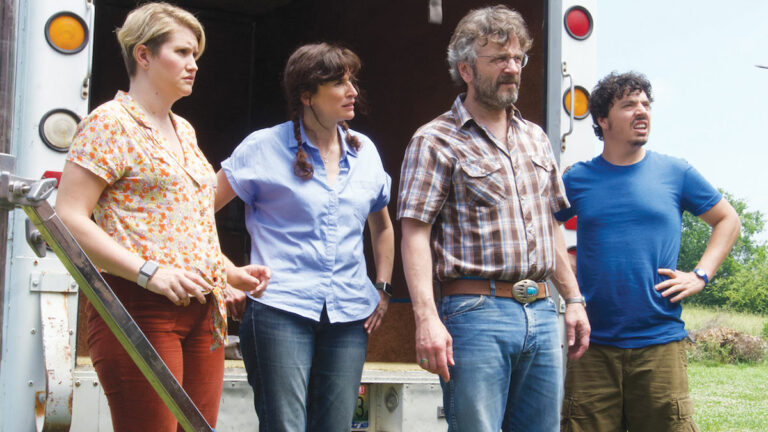When planets enter new signs, or retrograde back into previous ones, we change, too. Our time references shift, new possibilities and opportunities occur, we speak differently, our focus switches, things are either revealed or they go into hiding. July was quite a tumultuous month, with two eclipses (things disappeared) activating Saturn, Pluto and the South Node (transforming structures of the past—governments in disarray) and the Mercury retrograde (things turned upside down, inside-out).
In August, although we feel we can move forward (Mercury direct, returns Sunday to fiery Leo, where we begin to talk about ourselves again) another retrograde, the higher octave of Mercury (Uranus) is beginning. Uranus, planet of revelation, revolution and sudden, unexpected changes, stations retrogrades in Taurus Sunday evening. Uranus is the Great Awakener. It shakes us up and breaks everything down. With Uranus retrograde, it’s as if our whole body, our whole lives, are shaking apart.
Retrogrades are a time of restructuring the old, making room for the new. Internally, we begin to create new visions, seek new archetypes and new rhythms.
Uranus brings us a new order of things, an inner revolution. Our heads are turned around, facing both the past (old realities) and the future (new ideas). Taurus makes sure we stand in the present, with ideas practical, sensible and most of all, comforting.
ARIES: You love and appreciate your work and those you work with, and communication is good with everyone (though you must battle against critical thoughts). You want to help others more, which inspires them, and then work is even better and more fulfilling. Loyalty toward you emerges, new goals are considered and workflow increases, and so does success. It’s like a river flowing harmoniously for everyone. You stand at the river’s beginning.
TAURUS: You may not be romantic outwardly because of so much work to be done to insure the future’s sustainability. But this doesn’t mean you feel less love. It’s just that you’re focused and determined and disciplined and must follow your instincts and intuition and not let relationship concerns get in the way. You seek intellectual activities that also offer fun and a bit of leisure. The environment is kind to you when you travel. Remember, though: health first!
GEMINI: Emotional and then physical safety and stability are concerns now, and so you must assess, tend to and create safety measures around your home and self, then ask everyone to help maintain them. Everyone knows you change your mind so often they really can’t make plans with you. But for now, this has eased up and decisions made are decisions you follow through with. Or try to. Something ended last month. What was it?
CANCER: You feel the need to communicate with everyone, both casually and in-depth, for you realize everyone has a gift, and if they simply talk enough, that gift emerges and you learn more. You, too, have a gift—in fact, many gifts—and when you speak, when you come out from under your crab shell, then we see your gifts, too, and we learn from them. You are very perceptive now, more than usual.
LEO: There’s an inner and outer reality concerning something. They seem to be in opposition. You think you have to choose one over the other. Do you? Oppositions are actually only different sides of the same coin, seeking integration. Eventually they come together and unify. What is occurring that seems in opposition? Is it spiritual or material factors, self or others’ needs or values, being worthy or not worthy? Time will integrate the two.
VIRGO: You want to talk about issues and ideas important to you—things held deep inside and not often communicated: what you believe and how you want to serve; your new emerging identity and all the things you hope, wish and plan to do. You’re practical and inventive, and thoroughly modern in your approach. These may be important and applicable, especially concerning family. You bring a new reality forth. At first, it’s shocking. Then accepted.
LIBRA: Plans created long ago are now ready to be implemented, and you’re on the road toward their fulfillment. I hope all that you expected, all that you hoped and waited for, are available. There are some issues hidden behind the scenes, not quite ready for the light of day. For now, you’re ordering and organizing your inner-self so you can order and organize your outer realities, relationships and environments. Did a dream come true?
SCORPIO: As changes continue, it’s good to have a get together of friends and acquaintances you care about. Include local, sustainable and seasonal foods, scatter several interesting books around, set the music to old jazz standards. Perhaps you could suggest a subject to discuss, like how to create communities (the steps), what people would be attracted, the focus and purpose of community, and how it would prepare everyone for the new times to come. Allow no criticisms. Have a giveaway while saying goodbye.
SAGITTARIUS: Do all that you can to create compromise between yourself and those who see issues differently. Small disagreements can escalate quite quickly. Include good things in your compromises, so those around you feel they have been heard and listened to. Ask what they want and need, and this will be reflected back to you in terms of recognition and rewards. Be dashing as you perform these acts of kindness. You’ll become even more attractive and radiant. New vistas beckon ahead.
CAPRICORN: You could feel a bit overwhelmed due to just too many events flooding your reality, not eating adequately and in a timely matter, or simply because you’ve been “on” for just too long. When you’re upset, you can lash out with words that hurt everyone, including yourself. Lay low for a while, maintain a bit more solitude, rest and recuperate, allow others to perform tasks while you’re in the garden reading. Tell everyone you need tender loving care.
AQUARIUS: You may need to discuss issues with someone, perhaps a partner, parent, family, friend, or roomie. Do this openly with candor and ease, always using an informational, neutral tone. Do not be frightened to discuss finances. Information is knowing you’re speaking the truth for you and those listening. Ask for teamwork, understanding and consideration. Maintain humor each day as things change, and then change some more.
PISCES: The focus is on relationships, those close and intimate. This includes work partners and close friends. You find yourself with two trajectories—one seeks to create harmony and goodwill; the other to increase discipline and efficiency, forging ahead with ideas and plans. It seems the two are opposite, and sometimes they are. You will have to bring them together, create a unity and synthesis. It may be difficult. Have willingness, dedication and intention. Then harmony prevails.
























